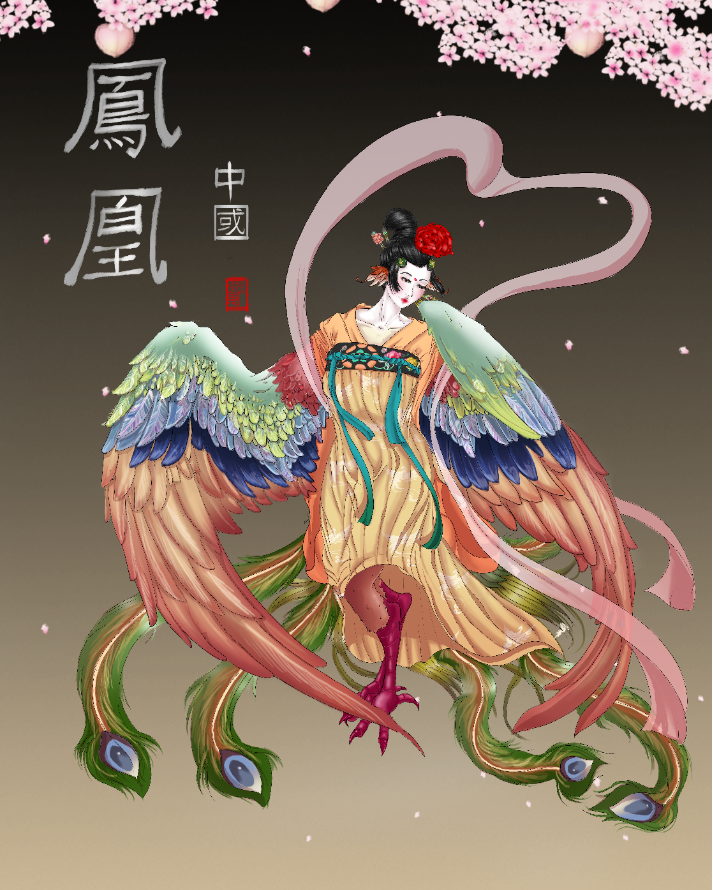
A secluded place under the peach blossoms to stretch my wings and fly. Just this once. No one will notice, right? The Feng Huang (鳳凰) often translated as phoenix or Asian Phoenix, are mythological birds that are found across East Asia. They are known as the ruler of all birds and traditionally have the head of a golden pheasant, the body of an mandarin duck, the legs of a crane, mouth of a parrot, the tail of a peacock, and the wings of a swallow. The phoenix was said to originate from the sun, and is a symbol of high virtue, grace, justice, fidelity, fire and the sun. In ancient times the phoenix had two entities; Feng (鳳) for the males and Huang (凰) for the females. They were later fused to form a single feminine entity which was often paired with the dragon which is traditionally male, the pair symbolizing the Empress and Emperor. The Fenghuang is said to be a sign of good fortune, and only ever descends from the heavens during times of true peace and happiness. Other tales say that the feng huang only appears at the start of a new era. Much like the zhen niao (鴆鳥), there are not any accounts of the feng huang transforming into humans in ancient stories. The idea of this creature shapeshifting into human form (or half human in this case) is a relatively new and I wanted to explore it more with this character.